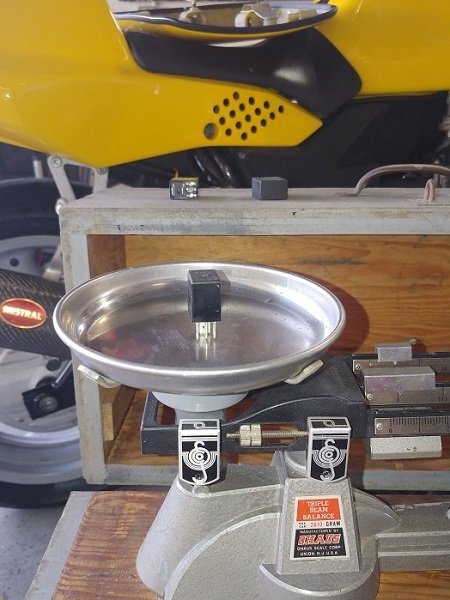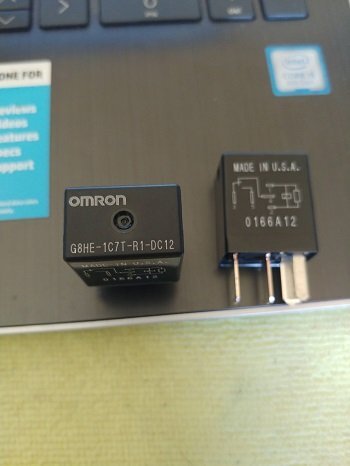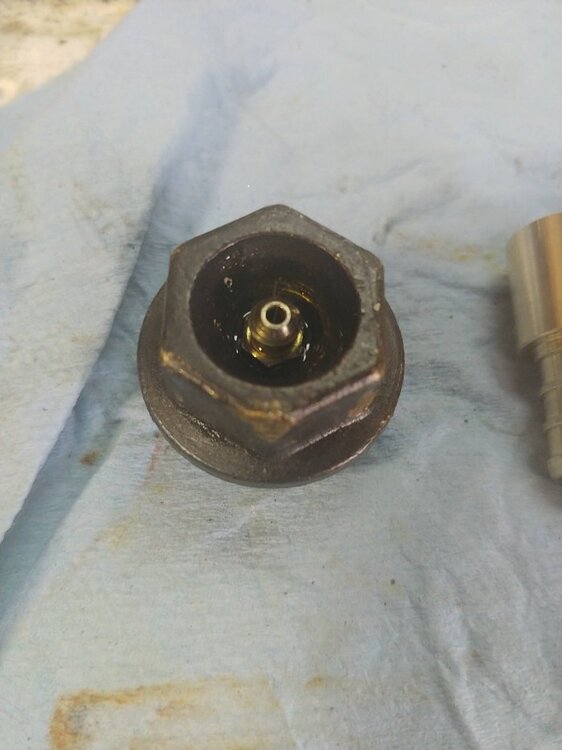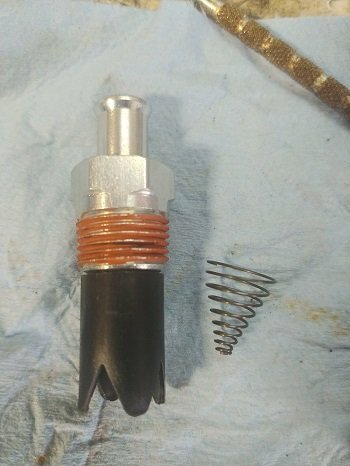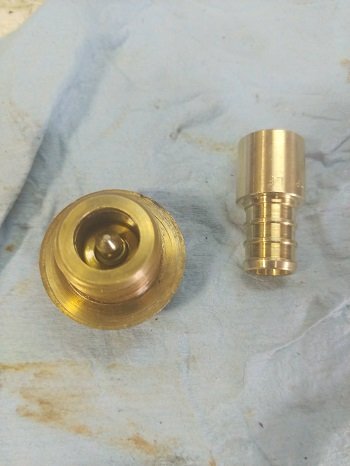-
Posts
1,613 -
Joined
-
Last visited
-
Days Won
64
Content Type
Profiles
Forums
Events
Gallery
Community Map
Everything posted by Pressureangle
-
A couple years ago, I started from S. Florida on a 10k tour around the Country. After much consideration and forum study, I rode in temps from 99*F to 46*F with only my 2-piece Roadcrafter, long sleeved and legged Underarmor, and Thorlo boot socks. Boots are Gasolina perforated leather. I had one pair of jeans, 2 t-shirts, and a thin patagonia hoody. The key is the Underarmor; it transports the sweat from where it's still to where it's breezy, so you don't need to be totally 'in the wind' to cool adequately. The worst was day 1, 670 miles from S. Fla through Georgia to meet the South'n spine raid in early September. 95*+ and 90% humidity. I hadn't learned all the cooling secrets of the Roadcrafter yet, but still made it ok.
- 38 replies
-
- 2
-

-

-
Mine has two faces, to me; 50mph + or -. Below 50, increasingly as the speed diminishes, it rewards weighted pegs and a light touch on the bars. The handling is typically Italian, very neutral with little inclination to either fall into or stand up out of a turn. For these conditions, such as the South'n Spine Raids, I keep 30psi front and 35psi rear. I drive the front pretty hard into the turns, but truly it does like to be on the throttle better. Even in my roadracing days, I've always been a bit timid in very low speed corners compared to others. Above 50, everybody knows they're the steadiest thing on two wheels. I like the suspension a bit looser for faster work, and I tend to stay centered on the bike- because going fast enough to require hanging off is really a fool's game on public highways. For 'casual play riding' I do shift my weight a bit for psychological comfort and out of habit. I don't think my '97 Sport is a short frame, but I'm not certain. FWIW if anyone has a weave in the wind or at high speed, check yourself to see if you are actually 'pulling' on the bars to counteract the wind. If you are, lean into it and get some weight back on the bars, see if that weave doesn't go away.
-
I'm 99% in accord with this, *but* there is that 1%. I've attached a photo of a Camshaft for illustration. On a big block Guzzi, all four cam lobes are on the same side of the cam. A compressed valve spring returns all of the energy input on the opening ramp back into the rotation of the camshaft on the closing ramp, minus heat losses through friction; on the ramps where a valve is closing at the same time another begins to open, the opening ramp 'catches' the closing rotational forces and *probably* cancels them. On the other side of the cam, though, there are two closing ramps with no opposing opening ramps to prevent them rotating the camshaft into whatever slack there may be in the chain, or perhaps overcoming the weak stock tensioner. Worse, they close at the same time doubling the effect. I believe that's the source of the spark scatter at idle, and I won't assert but remain open to the possibility that the ~3k rpm dip may be some function of chain slack and resonant property stack in the components.
-

Motorcycle Grand Tour of Texas - 2021 edition - Repository -
Pressureangle replied to p6x's topic in Meetings, Clubs & Events
Fort Stockton. Oh, the memories. The bathrooms in the Shell station are so bad I just use the dumpster out back. The receptionist at the LaQuinta was the sweetest girl you could imagine. She had two nice shiners. I keep my hand on my pistol. -
The gears will actually give you a bigger wet spot.
-
The signpost is a rusty Star Picket.
-
...and I entirely missed the part about the ignition sensing cam position, you cannot bring the ignition timing back where it belongs in any case. Ignition retards with the cam and the chain stretch. So now I am 100% pro-gear on injected motors.
-
I sort of wish I hadn't seen that. I know you're a huge fan of gears, and so am I. Now even moreso. How did that bit get past the screen into the pump?
-
I built a '85 LM1000 a few years ago, using a Web 86b cam and conical beehive valve springs with about 110# seat pressure and ~280# (?) over the nose of the cam. I used a Valtec tensioner in that, and it clocks over at 1000 rpm just fine, in fact the timing shows no fluctuation and I have to say I have no inclination to change it to gears. Just yesterday I started and timed my '89 Mille GT after having replaced the stock manual tensioner with a Valtec, again although with all stock valve gear and cam the timing is extremely steady. By appearances, the good tensioner does everything you need to cure the idle glitches. That said; This Mille GT appears to have been a fairly well-loved and well-kept bike most of it's life, if not perfectly maintained. The cam chain had about 3/8" slack on the manual adjuster, and contributed to crap idle and valve noise to the point I looked for a broken piston skirt. Now it ticks at 700rpm if I want it to. Here's the rub-the distributor bolts were stiff enough to make me think it's not been moved since the factory timed it, and after installing the tensioner I moved the timing somewhere between 5º and 10º to bring it up. That's a huge amount, and assuming it was ever where it belonged means these chains stretch a lot more than I would expect. Even if you bring the ignition timing back, the cam timing remains retarded to whatever extent the chain is stretched. On an engine with a 'big' cam (any of these Guzzi 'sporting' models) the idle quality and low-speed drivability hangs precariously on that timing to the extent that 4º is a very significant change. So you see there are two primary issues to consider, spark scatter and spark/cam timing. With a tonewheel and sensor, scatter apparently becomes a much larger problem, possibly due to simple ECU confusion. D'oh. I do love a succinct answer, which this is not.
-
I've installed one in my Sport-i of course, even though it's acknowledged that 5-speeds don't have the low gear acceleration enough to create a problem. I never saw my oil lamp flicker; but hey, it's a known issue with this engine configuration, and they're cheap insurance. What if one lives on a steep grade? Besides, all the cool kids have them.
-
Nitrogen has only two places in my world; 70% in the air I breathe, and 100% in tires where hot pressure is critical and blowouts contribute to fire safety. Nitrogen was a real fad for a while, but when you realize that if you let all the air out of your tires, and re-inflate with 100% nitrogen (can you verify that it's 100% nitrogen?) you still have all the regular atmospheric air in the tire left over. So you go from 70% nitrogen to 90% nitrogen. Even the guys who use it for tire pressure control use pressure caps when it's legal.
-
*strictly* for balancing engine components. and small electrical devices. and such.
-
Good grief, made me climb the ladder and wake up ol' 3-31 and remind myself how old I am. I have only 4 relays. Weights; Siemens original 15.1g GEI Chinese, 18.9g Omron USA, 20.1g The Omrons aren't noticeably heavier than what's in the bike, I'd been fondling my Seimens spares.
-
So I received my Omron relays today from eBay. All I can say is that the quality of the housing is notable better than some others, and that they literally weigh twice as much as the non-Omron relays I have in the bike. Yikes...they may actually be what we hope them to be.
-

Another rear drive box vent thread
Pressureangle replied to Pressureangle's topic in Technical Topics
I keep thinking that myself, but given the bashing of parts by the straight cut transmission, I like the idea of the bit of cushion provided. Getting a hose that fits and stays on is a challenge, to be sure. -

Another rear drive box vent thread
Pressureangle replied to Pressureangle's topic in Technical Topics
Oh, and I have to say that the Caruso gears have made a *Yuge* difference in top end running as well as bottom. I have to ask myself if I'm imagining things. In the past, it seemed to take a very long time to get where it would go, indicated about 130. Although I've opened the airbox top since my last WOT speed adventure, 100 came and went so fast at part throttle it's like I sprouted an extra cylinder. We may check that Saturday. -

Another rear drive box vent thread
Pressureangle replied to Pressureangle's topic in Technical Topics
Yes, it's a tiny hole but it only has to pass air as fast as the rear end can heat it. I'll add the hose by Saturday, to keep track of any oil that gets out, keep water out, and hopefully keep the heat cycles from drawing in any meaningful amount of our summer humidity. -

Another rear drive box vent thread
Pressureangle replied to Pressureangle's topic in Technical Topics
Docc, I don't know about the V11 vent system. The 'Sport rear takes 250cc, I used Lucas 80/140 'super duper high performance' gear oil, with about a tablespoon of Jet-Lube open gear and cable grease, which appears to be pure Moly with enough grease to make it stick to stuff-I use that on the spliney stuff. So, after ~20 miles of "3 miles in the middle was 80-100mph" The housing temp was 116*F after 5-6 miles home @ 35mph. But yay, there is no trace of oil at the tip of the bleeder, I didn't even put a hose over it so I could be certain. Saturday I'll go beat it up where I can hold 70-100 for 1-15 miles, and take the temp gun with me. I know y'all have recorded drive temps, what's the norm? 116*F isn't even worth talking about in automotive axles. -

Another rear drive box vent thread
Pressureangle replied to Pressureangle's topic in Technical Topics
Yeah, but this time the *skirt* is brass. -
When I put the bike together a few years ago for my long trip, I went around looking for a reason for, and solution to, gear lube being forced out of the rear drive seal and onto the rim. I ended up drilling a hole in the filler plug and pressing a grease zerk with ball removed into the hole, and running 3-4 feet of tubing up the swingarm and along the frame, exiting by the rear turn signal. In the main it was ok, but at high speeds and unknown distances it still emptied about half the gear oil out of the box over my 10k mile trip. Whilst overlooking my deficits for the 2021 South'n Spine Raid, the tubing disintegrated. So I went looking again. I replaced the zerk with a brake bleeder, tapped and screwed in. The single hole in the bleeder faced forward, away from the flow of lube inside. Way better than the zerk, but still came home after 50 miles with some drool on the wheel, too much to tolerate. So here's my plan. I looked online at axle vents etc, and found one from a jeep with a plastic skirt under it, and a conical spring inside to 'filter' and decant oil back to the axle. I couldn't make it fit under the drive stay rod... but it did give an idea. I stole the spring out of it, went looking for a skirt and found that a brass PEX adapter was a very nice, very tight press into the underside of the fill plug. I wound the spring into the hole and pressed the adapter in with the bench vice, hopefully protecting the bleeder hole from any direct oil splash. Now, on to the testing. Yes, I've considered that it may shake loose. No, I'm confident that it can't-it's tight but not so tight to worry about cracking or splitting while pressing it.
-

Le Mans handlebar end weight: powder coated or standard paint spray?
Pressureangle replied to p6x's topic in Technical Topics
I'd (no I wouldn't myself, actually) chuck it up into my cordless drill and spend a little time smoothing it out, then zinc primer it and final coat with black gloss Rustoleum. Let it dry well in the sun, or oven if you have no sun. It'll be so hard you'll think it's powder coated.





